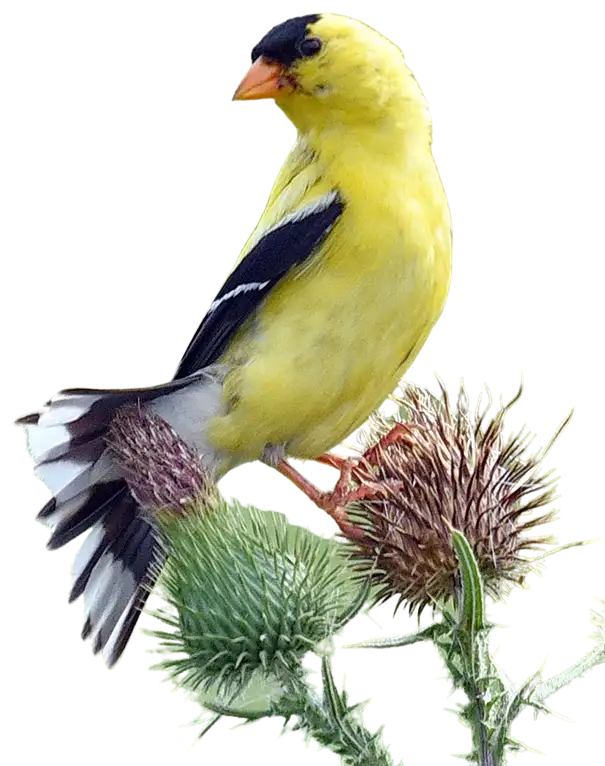Should We Use Birdsong Recordings To Attract Birds?
With migration largely behind us and breeding season in full swing, it’s time to think about the use of birdsong recordings (commonly called playback) to attract birds in the field. This controversial practice has become more and more commonplace as phone apps put these recordings in the hands of many more birders.
Why does anyone play recordings to attract birds? During the nesting season, playback can attract birds that are defending their breeding and nesting territory. Hearing the song can make the bird think that a rival individual has entered its territory, so the bird rises from its nesting area to defend itself and its mate. Alternately, the bird may not respond to the perceived intruder at all, hunkering down near its nest and staying silent. Sometimes a female will emerge from the nesting area to check out the new singing male, to see if he may be preferable to the one she’s already chosen. Birds also may respond to playback in the fall or winter, but breeding season is when the use of recordings can be most effective.
All of this being said, the bird’s response to playback briefly disrupts its process of nesting, breeding, and raising young, raising many questions about whether the use of recordings is actually harmful to birds.
The American Birding Association has this to say in its code of ethics: “Limit the use of recordings and other audio methods of attracting birds, particularly in heavily birded areas, for species that are rare in the area, and for species that are threatened or endangered.”
The use of “limit” here leaves plenty of room for interpretation. What use of recordings is enough, and what is too much? What about “other audio methods” like pishing and imitating screech owl calls? How do we decide?
David Sibley wrote an article on the Sibley Guides website that examines this issue in considerable detail. (He updates the article regularly to reflect the most current thinking, with the last update made on February 13, 2020.)
Sibley points out that playback is prohibited in many parks and wildlife refuges, and that federal law already protects endangered or threatened species from “disturbance,” further prohibiting the use of playback. However, only one study to date (Mennill et al 2002) has actually shown a detrimental effect on birds exposed to continuous playback: the high-ranking male birds, in this case Black-capped Chickadees, lost status among their own ranks because they could not chase away the singing intruder.
“Researchers generally agree that the effects of playback are poorly-known, but are probably (paradoxically) both far-reaching and small,” Sibley writes.
With so little research on the subject, it is difficult for the RBA to take a stand absolutely against the use of playback. Certainly our members have had the experience of attending a field trip and seeing the leader use playback to attract a desired species. We often hear the question, “If the leaders can do it, why can’t I?”
There are no “birding police” in the field, so it’s up to each individual birder to act responsibly on his or her own.
Here are some guidelines that can help you make good choices in the field, based on Sibley’s recommendations.
- Obey local restrictions. If playback is prohibited at the park or refuge you’re visiting, don’t use it. These regulations are usually in place to protect migrating species that are resting and feeding and need to gather strength, or to protect sensitive endangered species that nest in the refuge.
- If you are with other birders or there are others nearby, ask them if they object to playback before doing it. Many birders have strong objections to playback. Be a courteous birder and respect their wishes.
- Do not play a recording at high volume. Your phone’s speaker is plenty loud enough to rouse a bird that is close by. If the bird is so far away that you need to boost the sound using a Bluetooth speaker or other device, you will not pull it in close to you with loud playback. Hold the device over your head and play the song softly to attract a bird that should be close by.
- Do not play a recording continuously. While the bird has no concept of what a recording is, birds do know that they don’t sing their songs in a continuous manner without pause. If you must play a recording, play the phrase of the bird’s song once and wait at least 30 seconds between playbacks, much the way birds sing. More than that is simply harassment, and will probably drive the bird away rather than bringing it in.
- Watch for the bird to appear. The bird may be guarding its mate, so it won’t sing to attract attention to itself. Keep an eye out before playing the song a second time.
- If the bird doesn’t appear after two or three tries, stop. You may have driven the bird deeper into the woods or brush to hide from the challenge. Check again in ten minutes or so to see if it has resumed its normal activity.
I’ll give Sibley has the last word on this: “It is up to all of us to encourage our fellow birders to behave responsibly in the field. Field trip leaders who use playback should make an effort to educate their clients about the proper use of playback. If trip participants want their leader to use less or more playback, they should have a calm and reasoned discussion about it. In many cases we will need to educate new birders about the impact they have by playing recordings from the app they just downloaded to their phone.”
—Randi Minetor, for the RBA Board of Directors



